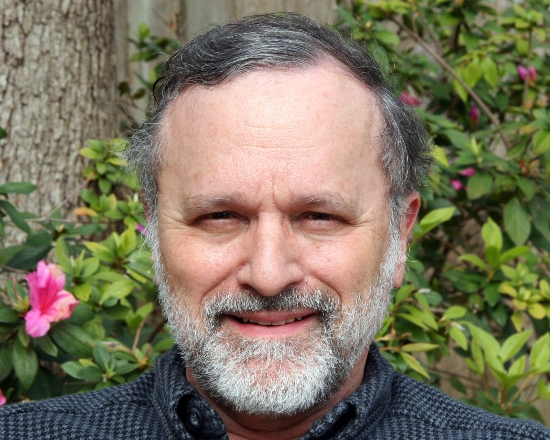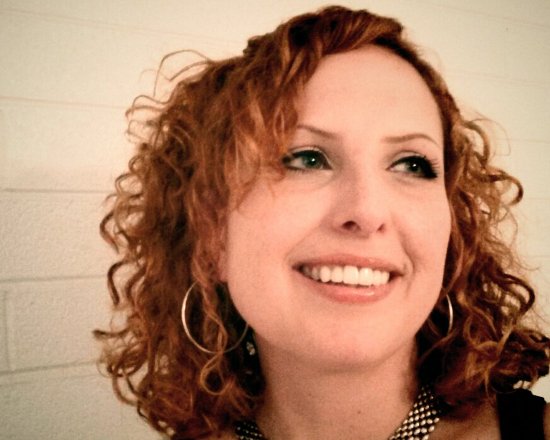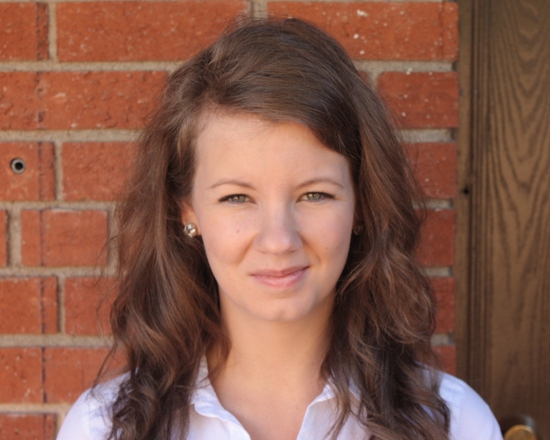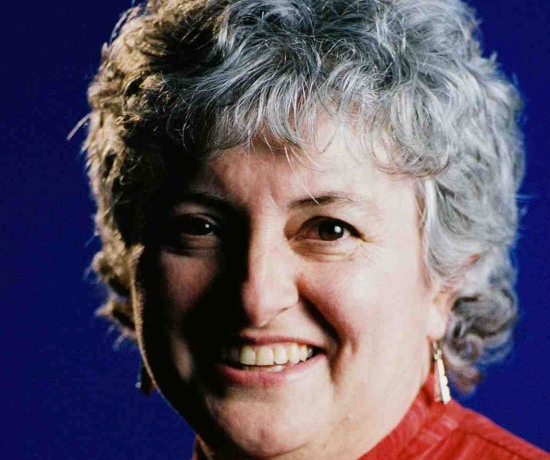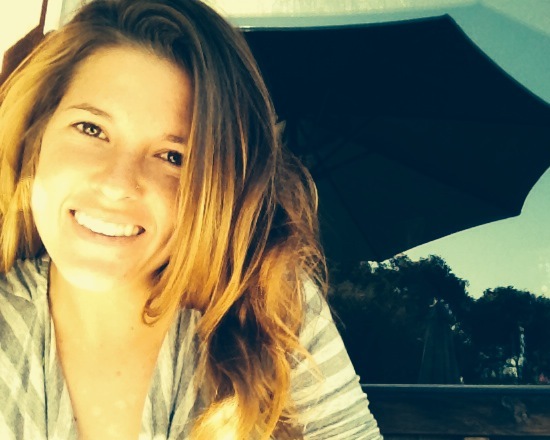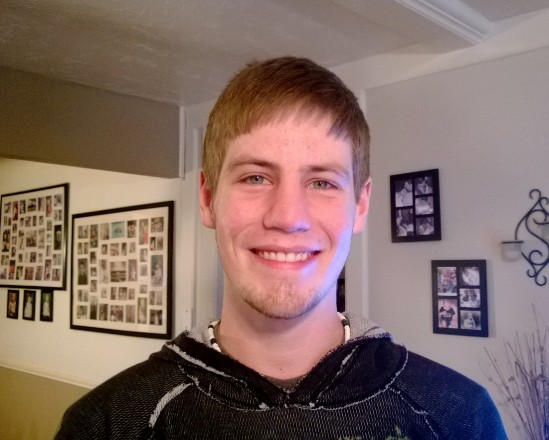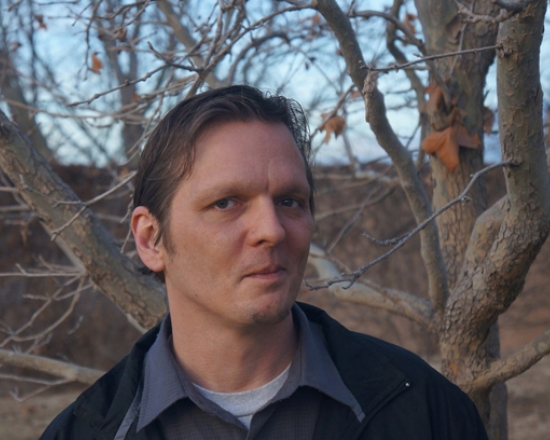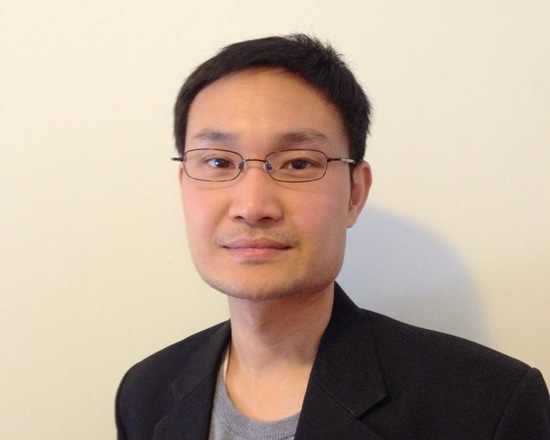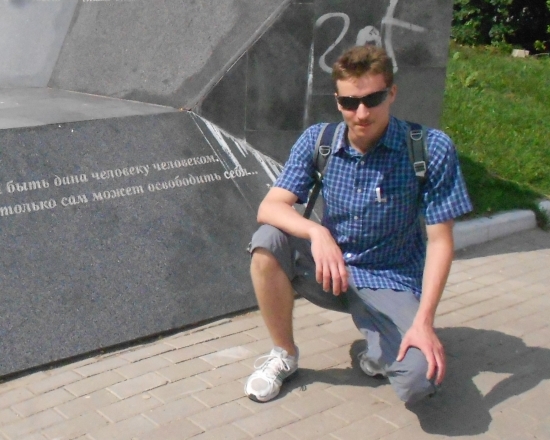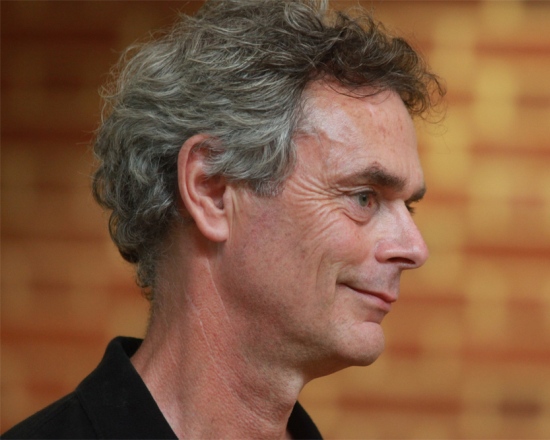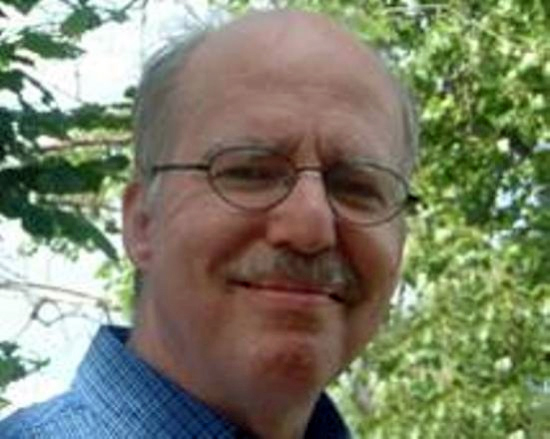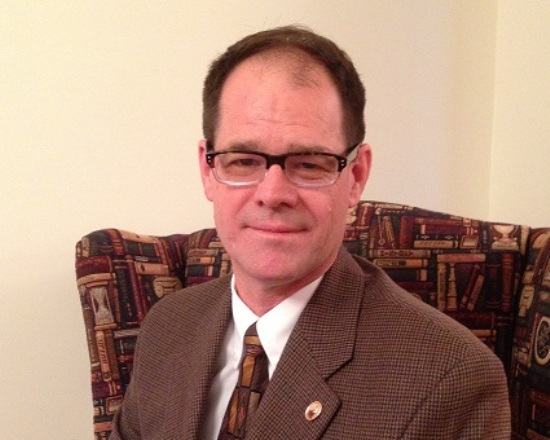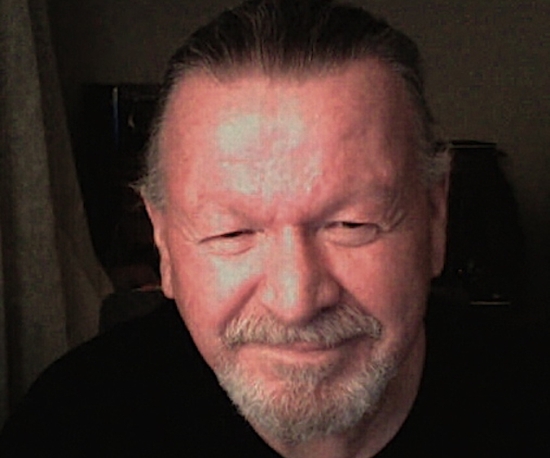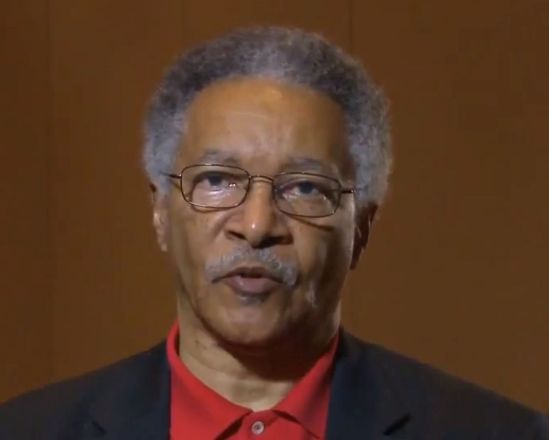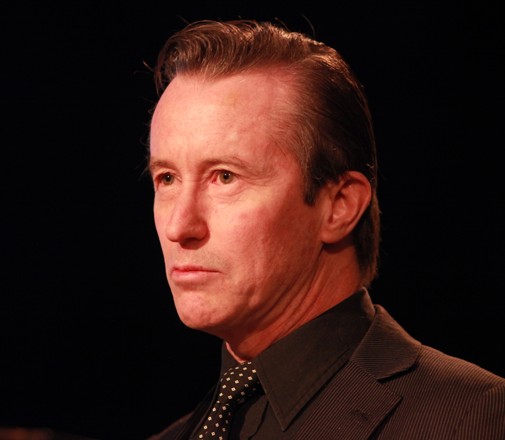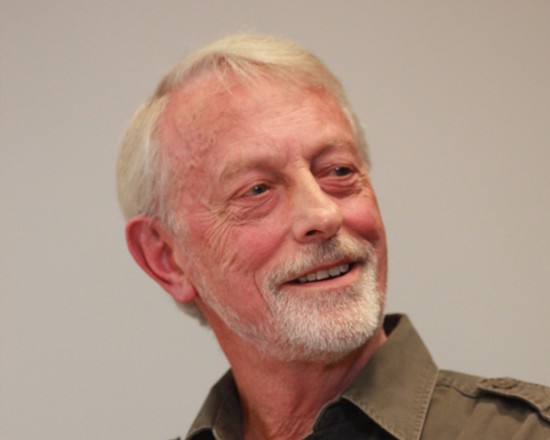DR. PIERRE LATOUR
By Dr. Hilton Ratcliffe
Highly lauded chemical engineer Dr. Pierre Latour makes a welcome appearance at EU2014. With his background in chemistry and hydrocarbon processing, Pierre is eminently qualified to assess the validity of theoretical and empirical models underpinning the Anthropogenic Global Warming (AGW) movement and will be focused specifically on atmospheric greenhouse theory for this year’s conference .
Pierre Latour was born in Buffalo, New York, of French-Canadian descent. He obtained a BS in chemical engineering at Virginia Polytechnic Institute in 1962 and transferred to Purdue to take his Master’s, where he went on to achieve his doctorate in 1966. It was the foundation of a stellar career in applied chemistry, mainly in the fields of petroleum refining and process control. He added to his academic repertoire in 1968 with graduate courses in physics and mathematics at UCLA. The stage was set for Dr. Latour to make his mark on the world of science.
Retired now and living in Texas, Pierre can look back on a life studded with achievements, particularly in the area of process control, where he was and remains an innovative pioneer. He co-founder of five separate corporations, led refinery development initiatives in Japan, Europe, Australia, India, Venezuela and U.S., and is retained as a direct consultant to 62 different clients worldwide. Academically, his work has been widely recognised too, culminating in the Purdue University Outstanding Chemical Engineer Award in 2007. He is a prolific author with 87 peer-reviewed publications.
For his EU2014 presentation, Pierre has chosen to share something from his ancillary interest, climate modelling. Pierre is vice chairman of Principia Scientific International, an alliance of empirical scientists under the leadership of eminent climatologist Dr. Tim Ball. The group concerns itself with exposing flaws in theoretical models that ultimately skew the direction of scientific and socio-political endeavours. Electric Universe enthusiasts are sure to appreciate Dr. Latour’s engineering approach to problem solving, and a prime example is his strictly rigorous approach to Anthropogenic Global Warming (AGW.)
Pierre’s presentation at EU 2014 is entitled “Engineering Earth’s Thermostat with CO2?” Already, we know that it’s an engineer talking here! The paper sets out to explain Earth’s temperature as a chemical process system; review the control system engineering of Earth’s thermostat; and show that anthropogenic temperature control by CO2 will never work because it is an immeasurable, unobservable and uncontrollable system.
Visualising the alleged atmospheric greenhouse effect thermodynamically, with carbon dioxide as a thermostat, is a brilliantly clear approach to the problem, and I can just imagine the audience leaning forward in its seat in anticipation.
Asked what his mission in life is, Dr Latour answers somewhat intriguingly,
Serve mankind and myself creating wealth out of thin air using engineering capitalism. Operate oil refineries more profitably and safely. Teach clear decision making by optimizing risky tradeoffs properly, a universal problem and solution.
It sounds fascinating! The lucky folk at EU 2014 are certainly in for a treat.
ANGIE LEE
By Dr. Hilton Ratcliffe
One of the ten EU2014 scholarships goes to Illinois native, Angie Lee. It seems to be something that was decreed by fate from her faintest memories of the wonders of the natural world. Her early education took place in Elgin, home of the once famous Elgin National Watch Factory. Elgin’s slogan was that their watches “kept time by the stars,” which made them the most accurate timepieces of their day. The factory closed with the advent of the atomic clock, and they deeded their observatory to the Elgin school district. Did this apparently fortuitous alignment of circumstances have any effect on young Angie? You bet!
Astronomy professor Don Tuttle became the director of the Elgin observatory and planetarium, and he eventually passed the celestial message on to over half a million intrigued students. Angie had the good fortune to be one of them. Her fascination with Earth and space infused her youthful curiosity from her very first visit, and she never forgot the awe-inspiring clockwork elegance of the planets’ rotation and orbits. “I could almost feel the turn of the Earth,” she declares. Angie and the observatory found synergy that lives with her still.
It was the clearness of the night skies that persuaded Angie to move to Arizona. After marriage and the birth of her two children, she turned her attention the matter of a college education. She currently holds down two jobs while studying as a full time physics major at Phoenix College. She plans to transfer to university in the autumn.
Meanwhile, she became a member of the Phoenix Astronomical Society and enjoys attending star parties when time permits. She also enjoys hiking and searching out petroglyphs in the mountains of Arizona. All roads lead to Rome they say, and for Angie, this particular road led right to the portal of the Electric Universe!
Angie first became aware of the film Thunderbolts of the Gods a few years ago. It was hardly a blinding epiphany, just the unexpected appearance of the video’s title on her YouTube recommendations. She had been using her spare time to read up on cosmic mysteries and their apparent correlation with geophysical phenomena. In plasma cosmology, she found methods of integrating history with current research and her space science roots reawakened. “I was fascinated to discover the scientists associated with the Thunderbolts Project,” Angie says. “Looking into the details pointed out by Electric Universe proponents, I was never again able to look at science news in quite the same way. There can’t be a set of questions not continually reevaluated as long as technology moves forward. There will never be an end to discovery.”
She describes herself as an avid, life-long amateur detective, searching continuously for explanations of the mysteries she felt so strongly to be true: The Sun neither lights nor heats from its core but gets its energy from elsewhere; that angels, gods and deities corresponded with celestial bodies; and that celestial events were recorded in art, dance, and literature.
She could hardly be a better fit to the ethos of EU 2014!
ERICA REINER
by Dr. Hilton Ratcliffe
EU2014 scholar Erica Reiner comes to us after studying not one, but two engineering disciplines—chemical and electrical—and there could hardly be better qualifications for a real understanding of cosmology than that. It cannot be denied that an investigation into the technical basis of electricity in the cosmos is best approached through the eyes of engineers, but at first, Erica had no conception of an electrical cosmos. She followed the scenic route to reach for her dreams. I asked her to share her fascinating story with us.
Erica was born in Waterford, Michigan, and graduated with honours from Brandon High School. In 2006, she moved to Tucson, Arizona, and enrolled for a course in chemical and environmental engineering at the University of Arizona. This included research on alternative methods of storing solar energy that did not require batteries. Erica joined the American Institute of Chemical Engineers in 2006. Professional engineering seemed to be a foregone conclusion, but first she took a sabbatical, participating in a NSF programme at the University of Queensland, Australia, and then spending the academic year of 2008/2009 studying mechanics and thermodynamics in Bilbao, Spain. On her return to the US, she took time to readjust, and remarkably, sustained herself by working as a nanny. It was a vital phase of her ongoing education. “The most amazing part of the job,” she explains, “was watching how toddlers learn about the world around them. It reinforced in me the idea that life is a playground to be explored without hesitation.”
In the autumn of 2012, Erica returned to school at Pima Community College, and in December, 2013, she was awarded her Associates of Science in Chemical Engineering. She is currently continuing her education in electrical engineering, and is looking to transfer to the University of Arizona in 2015.
Erica first heard about Electric Universe and Thunderbolts in the summer of 2013. She was prompted by the Snowdon revelations to start asking some searching questions, and in the course of that research came across the Suspicious0bservers website. From there, it was just a hop, skip, and a jump to EU. Erica explained that it was her background in chemical engineering that gave her synergy with EU. It was clear to her that electricity was the basis of all chemical mechanisms, and this led in turn to electrical interactions in biology. Erica’s intuitive understanding was confirmed by the lectures posted on Thunderbolts. It was that exposure to Electric Universe principles that led directly to Erica changing her degree course to electrical engineering.
Studying the Universe from microcosm to macrocosm, with emphasis on environmental issues is what really appeals to Erica, and she found that EU pointed her in the right direction to achieve that goal. Is there anything in particular that she looks forward to at EU 2014?
I am interested in learning about the research conducted by each individual and specifically the research techniques used. I am also looking forward to furthering my understanding of the EU. I have watched every video posted on the Thunderbolts project page, but I feel there is much to learn.
Given the opportunity to spend time with anyone from the world of science, Erica says she would most like to share space with women in engineering that have enjoyed their careers and found it fulfilling. I don’t know if there will be women engineers at EU 2014, but I do know that Erica will find plenty there to stimulate her enquiring mind, including some of the finest engineers currently active in the field.
Welcome, Erica Reiner!
KATHERINE FITZGERALD
By Dr. Hilton Ratcliffe
British-Canadian film-maker Katherine Fitzgerald is one of the recipients of an EU2014 scholarship and will be bringing with her a fascinating slant on the pursuit of natural philosophy. Born in Leeds, Yorkshire, to an Oxford University professor and a school headmistress, Katherine was suffused in learning from the beginning, and as her home moved with the nomadic academic lifestyle of her parents, her curiosity found fertile ground everywhere she looked.
Presently working on a Masters degree in film at Staffordshire University, Katherine found she was more drawn to the visual arts than to experimental science. In 1971, the family emigrated from the UK to Ottawa, Canada. She hated school and was bored stiff, so at 15 she left and went to university instead, starting with classics before moving on to photography and film. She ultimately decided to reinvent herself as a director, and it was in her third film, Outward Gate, that she began incorporating science into her films.
Katherine readily admits that she does not have a scientific background, but she has always been interested in science – particularly astronomy and biology. Much of her non-fiction reading over the years has been in the sciences, and has included Carl Sagan, Stephen Hawking, Rupert Sheldrake, Stephen Jay Gould, Lewis Thomas, E.O. Wilson, Carl Jung, Fritjov Capra, Gary Zukav, Deepak Chopra, Andrew Weil, and Caroline Myss among others.
Pursuing an interest in alternative science led her to Red Ice Radio, and in due course to the Electric Universe. She was vaguely aware of plasma cosmology and had heard of the Electric Universe, but knew very little about it. “I listened to Wal Thornhill’s 2010 interview with Henrik Palmgren,” Katherine says with a smile, “and I was hooked!” Not surprisingly, she had no idea there was an alternative to the familiar gravity-centric paradigm for understanding the Universe; one that not only elegantly and simply explains many of the anomalies found in the current model, but also incorporates discoveries from other disciplines—mythology, archaeology, geology, biology, and parapsychology. She listened to every other Electric Universe interview on Red Ice Radio—David Talbott, Donald E. Scott, Rens van der Sluijs—and she visited the Thunderbolts website.
Katherine devoured all the documentaries, all the presentations from the previous conferences, and read as many articles as she could. Having a background in classics and mythology, she was fascinated by the Saturn myth and Velikovsky’s theory of catastrophic planetary interaction. David Talbott’s work on the planetary polar configuration, the points of agreement in myth and symbols across cultures when representing the ancient sky, and Anthony Peratt’s investigation of rock art and plasma discharges all had Katherine transfixed.
Katherine discovered that astronomy had become extremely complicated in recent years, and she had trouble understanding the new developments. She admitted that the postulation of dark matter, dark energy, and black holes that are “reproducing like rabbits,” to quote Stephen Crothers, suggests that perhaps the scientists themselves are also confused. Astronomers are regularly surprised by findings that do not conform to expectations. But what astonished her most about their surprise, as Wal Thornhill notes, is that they do not question their assumptions or consider an alternate paradigm like the Electric Universe.
I asked Katherine which scientist she would most like to spend time with. She didn’t hesitate. “I would like to spend time with Rupert Sheldrake,” she told me, “I was delighted to see that he presented at the conference last year and hope he presents in future. Then meeting him would be a real possibility. I have admired Rupert Sheldrake and followed his work for years. But I also admire any scientist who has the courage to challenge scientific dogma. Therefore, I am looking forward to spending time with all the scientists at the EU conference.”
Katherine’s disparate interests are not strange or weird – they make perfect sense. For her, everything is connected. She said: “I have left mention of the best aspect of the Electric Universe paradigm until last. When I began my investigation, I found to my delight that it includes everything that I am interested in – science, history, mythology, archaeology, psychology, art, music, biology, consciousness, philosophy, natural history and much, much more.” She went on to say:
As a filmmaker, who has recently discovered the Electric Universe, I would like to bring this paradigm to a wider audience by incorporating it into my artistic work. I plan to cater to the growing interest in the Electric Universe through narrative filmmaking. My next screenplay will deal with this subject matter, and I am sure the conference will ‘spark’ many creative ideas.
When she became part of the Electric Universe community, Katherine Fitzgerald may finally have found a home.
LILLY BLACK
By Dr. Hilton Ratcliffe
No one could ever say that Electric Universe supporters are produced by a single cookie cutter, just an endless series of sycophantic clones in Neverland. Our diversity is our strength, and the adjective “eclectic” might have been invented just for us!
Lilly Black, one of our conference scholars for 2014, found her way to EU in a unique way, and it makes for a great story. Lilith “Lilly” Black is a long-time resident of the fabled Southern Willamette Valley of Corvallis, Oregon, about 50 miles from the Pacific coast. Her home is nestled between the Coastal and Cascade ranges on the Ring of Fire, covered in lush forest land and surrounded by nine volcanoes. We all know that where you find volcanoes, you get electricity, lots of it, and I guess some of it rubbed off in a manner of speaking. Before she found EU, however, a fair bit of water would flow under the bridge.
Lilly was in her youth not so much interested in formal education as in absorbing whatever her environment could teach her. The standout experience of her younger years was the decade she spent officiating in the Boy Scouts and Explorer’s Post youth movements. Lilly was honoured for her efforts by being inducted to the Order of the Arrow (an elite campers’ association in BSA), and even worked on a National Order of the Arrow Conference as a Native American events staff member. She is currently at Oregon State University, pursuing two Bachelor’s degrees—the first is a self-designed course in international human resource management, and the second is in communication. She studies these academic arenas as they allow her an opportunity to be a conflict mediator. “I enjoy being able to provide the conduit to helping diverse people get along with one another,” Lilly explains.
Lilly first found Electric Universe by a roundabout route. By her own admission, she is not a scientist, at least not the physics-and-chemistry type; nevertheless, she is obviously a keen student of the human condition with an interdisciplinary approach, and has been intensively exploring the sociological aspects of scientific practice. After watching the 2006 feature “What the Bleep Do We Know?!” several times, she made the connection. She was at that time already deeply involved in consciousness studies, so she was profoundly impacted by the scientific information presented in the film, especially by Dean Radin, Gerald Pollack, and Amit Goswami.
“What the (Bleep) Do We Know” is a part feature film, part documentary about quantum physics. It asks questions about the separation of science and religion, and looks at what mysteries may be connecting time, matter, and space. It wonders about a scientific explanation for spirituality, and does so by looking at the connections between consciousness and space-time geometry, along with what is currently known in science. It was while researching the topic of solar flares and their biochemical effects on the human body that Lilly came across the Suspicious0bservers channel on YouTube and became hooked on the daily videos that explore the connections between the Sun, space weather, Earth weather, and the electric universe.
It was through months of researching these individuals and their beliefs that she heard of David Talbott, Wal Thornhill, and The Thunderbolts Project(TM). “From that very moment,” Lilly declares, “I was hooked on searching down more of this credible information which was finally able to so tangibly and scientifically answer what I could feel and see, but could not explain.” That this would lead her to Electric Universe was almost a given, and so it turned out.
Clearly, Lilly is very people-oriented, and my feeling is that she will have an absolute ball at EU 2014!
ALLISON GILLOT
By Dr. Hilton Ratcliffe
When Allison Gillot applied for an EU2014 scholarship, and was accepted, it was as if an unexpected dream was having a surprisingly good outcome. Allison applied because she really wants to be at the conference, and her reasons for doing it tell us a lot about this young student of the Universe.
Allison is a small-town girl from Carmel, California, and lives there with two dogs and a cat. A love of nature has defined her life and led to a deep fascination with the mysteries of existence. There is a charming balance to her approach. Running on the beach with her dogs is a counterpoint to her endless reading. “I have a passion for learning!” she says with a glint in her eye. “I love books, I have hundreds. I particularly love ancient philosophy, but my collection contains books on natural health, physics, metaphysics, and many other subjects.”
Allison has completed an Associate’s degree in physics and is currently studying at Monterey Peninsula College toward a Bachelor’s degree in that field. She is determined, no matter what, to attain her PhD. Her quest for knowledge presented her with a maze of directions, many of them dead ends, but one field caught and held her attention: quantum physics. Her exposure to the thinking of luminaries as diverse as Nikola Tesla, Pythagoras, Deepak Chopra, Lucretius, Michael Tellinger, and David Hatcher Childress led her ultimately to the threshold of Amit Goswami. Dr. Goswami is a theoretical quantum physicist whose theory of consciousness is called the Self-Aware Universe. For Allison Gillot, it was the jigsaw piece that turned the puzzle into a picture. Allison says her goal is to spend her life doing something she loves; to share with and spread to the world the amazing correlations between scientific theories and spiritual beliefs: “Once we can close the gap between these two seemingly different subjects, the world will have officially shifted into a new paradigm.”
In 2013, Allison met a traveler from Canada, and she felt an immediate synergy. It was from Dan that Allison first heard of Electric Universe, and that placed a significant milestone on her journey. She had just missed out on the Science and Non-Duality Conference in San Jose because it was too costly and during a busy testing week at school, and it was then that Dan told her about the Electric Universe Conference and how it would be perfect for her. He explained some of the theories and showed her a documentary he had, and it just clicked. A whole new avenue of exploration opened up before her.
Allison thoroughly checked out the website, read the articles, and watched the videos. She was astounded at the lack of evidence supporting the Standard Solar Model, and even more astonished that the more fathomable idea of an electric universe has been suppressed for such a long time. Allison became somewhat skeptical of the conventional description of comets, made topical by the recent flyby of the elusive Comet Ison, and then she came across an article describing comets as electrical phenomena. Once again, she was astounded and reassured; she redoubled her efforts to make it to EU2014.
Allison can relax now. She has been accepted for the scholarship, and we look forward to meeting her bright and enquiring mind at EU2014: All About Evidence.
BEN VOSS
By Dr. Hilton Ratcliffe
Ben Voss was born in Lake Jackson, Texas in March, 1995. Today, not quite 19 years later, he has been awarded a conference scholarship, and stands on the brink of joining delegates from around the world in attending the EU2014 conference in New Mexico. How did that happen? Let’s try to connect the dots.
Always an enquiring child, Ben was drawn to the story of Benjamin Franklin and his discoveries. The link to electricity was there from an early age, and after graduating high school in 2013, Ben found Nicola Tesla, and it was Tesla who shaped the young man’s future direction. He is quite frank about what fascinates him:
My interests are in the unorthodox, but to be more specific, I like to search for the truth of things, and I’m always asking a million questions. In general, I have great respect for scientists who question the orthodoxies of science and strive to set the science straight. It takes a lot of courage and diligence to challenge history we have made in science and try to find the truth, but it is a truly admirable feat.
After a fairly nomadic early school life as the family moved around to follow his father’s job, Ben was able to settle down in high school. The family had by that time moved to Kingwood, Texas, and it was there that Ben found his niche. Despite the disruptions, Ben was easily able to achieve A’s and B’s without much effort, and this, he says, induced a false sense of security and overconfidence.
College was a totally different kettle of fish, however, and Ben found his intellect being really challenged for the first time. Ben first came across the Electric Universe on YouTube, the first video he saw being “The Electric Universe Illuminates Recent Discoveries.” It was enough to make him inquisitive, and from there he just kept on searching. He sums up what he’s learned so far like this: “We’ve again been looking at the universe all wrong and it’s about time we put some serious time into continued search for truth and not creating our own universe on paper.” It seems this young man is a dyed-in-the-wool empiricist!
The biggest influence in developing his ideals has been his parents. They pushed him to ask questions and pursue any avenue of thought that caught his attention. The whole social environment he had around him in Kingwood was nurturing and supportive, from his teachers right through to his girlfriend. All his enquiring mind needed was the right sort of trigger, and fate served it up. When Ben found Electric Universe, he immediately recognised that a huge avenue had just opened up before him, and he found himself on the threshold of a dream. Ben aspires to travel the world in search of truth in the broadest sense. For him, the conference is a microcosm, where in a sense, the world comes to him.
Ben Voss’ personal mission statement is that he’s human, he’s a creator, and he has the ability to make a huge difference in the universe, even if by the smallest action. He is not alone in this ability. EU2014 is an exciting prospect for this enterprising young man and will go a long way to giving the rest of his life a sense of direction based on solid science.
Welcome to the charged cosmos, Ben Voss!
JACK PASSMORE
By Dr. Hilton Ratcliffe
Many Electric Universe enthusiasts came to us via the discipline of engineering; some became interested in cosmic electricity through astronomy; a few no doubt arrived after studying the goings-on of antiquity. However, there is only one I’ve ever heard of who found us via the route of art, spiders, and hydroponics! His name is John (Jack) Passmore, one of nine recipients of the EU2014 student conference scholarship.
Jack Passmore was born in El Paso, Texas, in 1969. His father was a psychiatrist and his mother a registered nurse, and Jack consequently enjoyed the kind of childhood where both his mind and his compassion were encouraged to grow and flourish. From his earliest memories, Jack recalls a fascination with the space age. Apollo astronauts adorned his bedroom walls. The whole family once travelled to White Sands, New Mexico, to witness one of the first space shuttles come back to Earth. It was a childhood wonderfully balanced between literacy and face-to-face love of nature.
At the age of 18, Jack struck out alone for Austin, Texas, to pursue his calling to art. He recalls that in 1989, he was captivated by the live telemetry during the Voyager ll flyby of Neptune. It occurred to him then that he could fuse his love of science with his passion for art by painting “spacescapes”—imaginary vistas from the point of view of the Jovian and Saturnian moons. He also created an imaginary visual history of the Universe commencing with the Big Bang and the primordial soup. Graphic art and digital media would define
Jack’s career from there on (he will graduate in May with his Associates degree in Digital Media), but his reverence for life and biodiversity compelled him to also make time for his other interests—alternative agriculture and Arachnology. Jack takes hobbies to a whole new level: He successfully hybridized flower species, experimented with soilless substrates, and streamlined procedures for cloning. And then there are the spiders! Jack raised spiders with an eye towards the harvesting of venom for the synthesis of antivenin for a particularly nasty little New Mexico native: Tegenaria Agrestis. Rather him than me! Jack says:
I at first set out to debunk EU theory. So, I began to search the internet and research EU theory on my own. Later, as I searched physics and astronomy forums I was struck by how closed off, dogmatic and compartmentalized the so-called scientific community was. To paraphrase Dave Talbott: What I found in ‘educated’ circles was less peer review and more jeer review!
Around 2008, after two years of skeptical inquiry, Jack hit his tipping point. It was an experience he describes as a “catastrophic paradigm shift.” From that point on, he has been a voracious follower of developments in the Electric Universe. “But more importantly,” Jack admits, “I’ve had to re-examine everything I thought I knew. The experience is still unfolding itself to this day as I see more and more how everything, everyone and every aspect of humanity is impacted by a cohesive and connected cosmology.”
Jack is part of a generation of bright young minds that is carrying the Electric Universe wave forward. There is a freshness and idealism in his approach that is undeterred by the sacred cows of mainstream science. I just don’t see how we can go wrong!
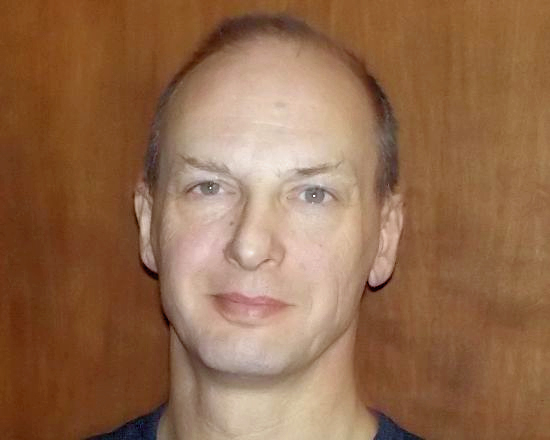
BOB WEBER
By Dr. Hilton Ratcliffe
“You have a good mind,” Bob Weber’s grandmother once told him, and the path that he would later follow was clear at a very early age. In ninth grade, Bob’s science teacher gave him and several classmates a defining project—a daily weather forecast for broadcast on the local radio station. The bug had bitten, and young Bob’s interest in weather and climate developed to the point where it has become his profession.
Bob Weber was born in Gaylord, Michigan. After graduating high school, he enrolled at Michigan Technological University where he attained a degree in electrical engineering. Following a career as an award-winning audio design engineer, he returned to his roots to take up the cudgel of climate change. What followed next was almost predictable: Bob founded The Electric Weather Channel on YouTube, and is currently constructing a website of same name. Bob’s mission is to produce and disseminate in-depth science videos pertaining to electric weather—the connection between the Sun and the Earth and human responses to solar currents. He bases his research on satellite data and science papers in the fields of solar physics, the magnetosphere, the global electric circuit, atmospheric electricity, climate, weather, and health. Clearly, it was inevitable that sooner rather than later he would connect with the Electric Universe movement. The whole issue of climate change, especially the Carbon-Anthropogenic Global Warming model (CAGW) is a very hot topic at the moment, if you’ll pardon the pun.
And no one is more passionate about it than Bob Weber. At Michigan Tech, while serving as feature editor for the school newspaper, he had a brief discussion with Dr. Stephen Schneider about his belief in CO2 being the big global warming driver. Now, twenty five years later, after years of observations and research, Bob can show how the Sun changes weather and climate, not CO2. Bob took an engineering approach to the problem, and came up with some interesting answers. He will present a talk entitled “The Electric Weather Effect” and from the title we are already intrigued.
In his talk, Bob will show evidence for the Sun’s electrical and magnetic properties, and explain how the Sun causes warming and cooling cycles and extreme weather events. In his presentation, Bob will show that the Sun, currently in solar cycle 24, is imposing a new tipping point onto the climate change agenda, informing us it is the real driver of earth’s weather and climate, not CO2. For decades, we were blamed for causing global warming and extreme weather events with our CO2. Now, after admitting that lower solar activity was the “cause” of the “pause” in global warming, scientists and politicians are faced with a powerful reckoning: The Sun that was the cause of the pause was also the cause before the pause. The Sun caused global warming, not carbon dioxide. Bob calls a spade a spade. He describes his goals like this:
Actively participate in science and policy by researching, developing, and communicating new findings and understandings. Along the way, I plan to replace the CAGW cult of politically correct unproven nonsense with a sensible, scientifically proven Electric Weather paradigm. After that, I just want to hang out, kick back, and enjoy life.
Fortunately, Bob has chosen to hang out with us at EU2014, and, agree or disagree, we’ll surely get a breath of fresh air in the climate debate.
DR. KONGPOP U-YEN
By Dr. Hilton Ratcliffe
The Electric Universe conferences attract delegates from far and wide. Dr Kongpop U-yen is no exception. He comes to us from Thailand via Australia, and that in itself is interesting enough. Add in that he has a doctorate in electrical engineering and works for NASA and we have the protagonist of a science mystery.
Although he was born in Los Angeles, California, Kongpop spent his early childhood in Thailand, and later in Australia. His teenage years were marked by his passion for scientific experiments, particularly those involving electronics, and it is clear that his future path had already been mapped out for him. After graduating from high school in Australia, he enrolled at Chulalongkorn University, Thailand, for a BS degree in electrical engineering. That was just the beginning. He moved back to the USA and furthered his studies in electrical engineering, attaining first an MS, then his PhD in electrical and computer engineering, with a special focus on microwaves.
As much as Kongpop enjoyed his formal studies, they were not enough to satisfy his healthy curiosity, and he devoted a lot of his spare time to exploring the mysteries of astrophysics. His particular field of interest was the connections between the planets and the Sun, and he spent several years studying them. It soon became apparent that the conventional standard models of the Solar System presented more questions than answers, and that led him to explore alternative ideas. Inevitably, he landed on the Electric Universe movement, and the physicist in him was immediately satisfied that anomalies in the model could be explained using simple electrical theories and experiments.
Dr U-yen’s presentation at EU 2014 will be a reflection of his private research. “I am a civil servant at NASA Goddard Space Flight centre as a senior microwave design engineer,” Dr U-yen says, “However, my presentation at the Electric Universe conference is based solely on my personal research.” Aside from his demanding profession in space science, Kongpop has few interests not directly associated with astrophysics, although he does find time for philosophy:
My hobbies and interests are in the areas of heliophysics, space weather, planetary science, astronomy and Buddhism. I like to read and do my own research on these topics whenever I have free time on weekday evenings and weekends. I also teach philosophy of Buddhism and meditation. I am an educator that teaches students to think critically and to use wisdom to create a shift in paradigm in sciences and engineering.
Sir Isaac Newton once famously admitted to his friend Edmond Halley that he “stood on the shoulders of ye giants” to gain his understanding of nature, and after getting to know Kongpop U-yen a little better, I feel I may well soon be standing on his shoulders to improve mine.
IVAN STANCEK
EU2014 First Student Scholar
By Dr. Hilton Ratcliffe
Two years ago, The Thunderbolts ProjectTM embarked on a significant outreach programme to sponsor students from around the world for a trip to the EU2013 conference in Albuquerque, New Mexico.
Ivan Stancek of Slovakia was one of thirteen scholars to that event. This year Ivan is honored as the first recipient of a student conference scholarship to Electric Universe 2014 Conference: All About Evidence. EU2014 is going to continue the tradition established in 2012 of gathering together a widely disparate group of individuals who despite their differing fields of interest, nevertheless have something vital in common: The pressing need to uncover the real laws of nature, and an overwhelming desire for truth.
At this year’s conference, one particular attendee might easily be overlooked because he is not the sort of chap who promotes himself. 21-year-old Slovakian student Ivan Stancek was at last year’s conference as a scholar, and this year he’s at the front of the queue. It would be a good idea to get to know him a little better and find out what makes this young physicist tick. Ivan Stancek was born in Zvolen, Slovakia, in November 1992. In 2012, he graduated from high school and moved on to the Matej Bel University to begin a degree in physics and mathematics. For personal reasons, Ivan changed in 2013 to a course in the Faculty of Forestry at the Technical University in Zvolen, where he is currently in the second semester.
When I asked Ivan what his goals were, he said simply, “to find the employment that can provide me with enough money to cover my private research (and travelling expenses to the EU conference).” His reply holds a revealing clue to the philosophy of this likable young man. Physics and mathematics were always his favourite subjects, and he got straight A’s in his final examinations at high school. Although his academic results were excellent across the board, in his heart he was a dedicated empiricist. He decided that the best way to continue exploring the wonders of nature was to set up his own home laboratory.
Ivan had little interest in doing research only on paper; he needed to perform low-tech experiments, and at the same time to get some money together to invest in better equipment. Ivan’s dedication to observation and experiment rather than theoretical modelling was something that I could immediately resonate with. He reminds me of a young Michael Faraday, the great 19th century experimentalist who gave us some of the fundamentals of electromagnetism and inspired James Clerk Maxwell to write up the formalism that underpins electromagnetic theory and practice to this day. It wasn’t easy for Ivan to make progress with his meager laboratory, but he stuck to it tenaciously. He took part-time work at a construction site and night shifts in a milk factory to raise some capital for improvements to his laboratory.
In the meantime, Ivan learned how to efficiently salvage and restore old electronic equipment like radios and TVs and was able to get lot of equipment without buying anything new. Eventually he had saved enough to acquire an oscilloscope and magnetic vector sensors and was then able to produce more accurate results with his own data and charts. Ivan achieved an incredible amount in his basic home laboratory, including the mechanics of solid objects, magnetism, and electrostatics. Ivan still kept his broader interests in focus by reading widely on a range of subjects, including Machiavelli, Benjamin Franklin, Leonid Andrejev, Tolstoy, and Adam Smith’s The Wealth of Nations.
And his inspirations? He lists the most important influences in the fields of mathematics, physics and life experience as Leonardo Fibonacci, Gottfried Leibniz, Benjamin Franklin, Alessandro Volta, Andre-Marie Ampere, Samuel Morse, Michael Faraday, Thomas Edison, Nikola Tesla, and Winston Bostick—especially their experimental work and their determination despite all odds. No surprises there! His trip to EU2013 as a scholar was the first time anyone in his family had traveled outside of Slovakia, and for Ivan it was a life-changing experience:
There were only a few students from Europe going to the conference (two, to my knowledge) which meant that I not only represented my country but the entire European continent.
That down-to-earth humility and sincere appreciation for anything that is swung his way gives me pause to reconsider the opportunities and privileges in my own life that I have taken for granted, and makes Ivan Stancek a person I would really like to meet in person one day.
Welcome to EU2014, Ivan!
BOB JOHNSON
By David Talbott
It was only a few years ago that I had the opportunity to meet Bob Johnson for the first time when he came to Portland on other business. From our discussions, which included a few local Electric Universe enthusiasts as well, I had no doubt that he could emerge as a key contributor to EU theory. And that’s exactly what has occurred.
I have said it many times privately and am now happy to say it more loudly. Bob is undeniably one of the most discerning researchers and critical thinkers we have ever gotten to know. His conference presentations from NPA18 in 2011 as well as EU2012 and EU2013 have produced consistent praise from the best researchers in our group. At last year’s conference, his critical review of the Electric Sun model was a milestone contribution to EU theory, helping to move the research beyond its interdisciplinary underpinnings into more specialized experiment and analysis. All agree that his work will impact the future of science as the role of electricity in nature becomes more generally recognized.
Bob is always delighted to find points of disagreement in areas of supposedly settled science. “What truly amazes me,” he says “is just how many ‘settled’ questions turn out, on closer inspection, to be nowhere near as settled as the specialists would apparently like us to believe. In fact, I doubt that there is any major discipline which is free from challenges to the ‘consensus’ model if you look closely enough.” He’s not talking about challenges from the fringes, but challenges from within the discipline itself and published in the peer-reviewed literature. The only reason that many disciplines appear settled, Bob notes, is that the disagreements are seldom mentioned in the popular scientific media:
Why am I excited to uncover these challenges? It’s because they say to me that there is still something left to be discovered after all, and that perhaps there is room for an outsider such as myself to be able to suggest new ways of looking at the problems.
But how can a non-specialist possibly hope to contribute to science in today’s world of massive, well-funded and highly knowledgeable research teams? It’s a fair question, but Bob reminds us that these teams are often so specialized that they are probably unaware of relevant findings from other disciplines. This is where Bob’s own interdisciplinary approach is so valuable. It brings new dimensions to a problem that may not be apparent from a specialized perspective. He has demonstrated the point more than once in his conference presentations by presenting outlines of new possibilities “where the existing model seems to be struggling to fully explain the evidence.”
In his two talks at EU2014, Bob will talk about plant physiology and geology. In both disciplines, there are consensus models with wide support but with no generally accepted answers to the serious questions raised about them. “I hope that my suggested answers can offer a way out of the dilemmas,” he says, “or at least some new factors to consider. That would be really exciting!” Exciting indeed, and highly valuable contributions both to the EU movement and to scientific progress.
DR. MICHAEL BRILL
By Dr. Hilton Ratcliffe
Dr. Michael Brill makes his EU debut at this year’s conference. Although a physicist by profession, Dr. Brill has a deep interest also in geology, and it is in the field of geological structures, particularly related to carbon, that he will be sharing his expertise at EU2014.
I’m sure many of us will prick up our ears when we hear what Mike Brill’s talk is about: The remarkable Ninety-East Ridge in the Indian Ocean. The ridge stretches about 5,000 kilometres due south from the Bay of Bengal, and is notable geographically for two reasons: It dissects the Indian Ocean into West and East halves; and it is a seismic and has few active volcanoes, despite being in a general region of earthquakes and volcanism in the rather broad tectonic boundary between the Indian and Australian plates. To the physicist interested in structures, however, it is remarkable for another, not entirely unrelated reason—its seemingly artificially constrained rectilinear alignment. It is almost perfectly straight.
To Dr. Brill, only an immensely strong material structure could maintain the straightness of a huge ridge like Ninety-East. Only one element is known to be capable of the sort of reinforcement demanded by the basalt massif—carbon. Carbon strands are currently being used increasingly in high-tech creations where super-strength is the priority, and Dr. Brill suggests that they may have featured in the formation of Ninety-East. His talk will present a fascinating model of how this carbon-reinforced structure might have come about and offers the possibility of a whole new vista in geology. In his own words, Dr. Brill puts it into perspective:
My aim is to challenge the orthodox idea of “spatial uniformitarianism” that limits the possibilities of materials on Earth. In discussing this idea, I support the idea of Thomas Gold, Alex Scarborough and others that terrestrial carbon is available in greater abundance and polymorphism than is explainable by fossil-fuel generation. If true, this idea changes the whole nature of our energy crisis.
Dr. Michael Brill was born in Bay Shore, New York, and in high school had already become fascinated by the theories of relativity. After a degree in physics, he went on to do a doctorate at Syracuse University on human colour perception. He has enjoyed a life-long career in artificial perception, working on machine recognition of human speech and more recently, measurement of colour. He describes himself simply as a “color scientist.”
I have not yet met Mike Brill, but I was delighted to see him list in his hobbies and interests that he enjoys “recreational mathematics.” We are few and far between! He also makes time for less arcane pursuits like writing, poetry, and table tennis. “I want to expand the notion of what is possible,” says Mike, “personally, between people, and in our environment. Physics is an archipelago of knowledge (the relativities being very small islands), and I think geology is as well. We have to build bridges between the islands of the archipelago, always being wary that what we think are islands may really be mirages.”
To some, Dr. Brill’s hypothesis may seem a bit left-field, but as an exercise in lateral thinking, it is invaluable. This sort of vision shifts our horizons and opens up new worlds to explore; few among us would turn down an invitation like that!
DR. PIERRE-MARIE ROBITAILLE
By Dr. Hilton Ratcliffe
Pierre-Marie Robitaille is one of the true gentlemen of science. He will bring to EU2014 a quiet, unassuming demeanour and an embracing scientific ethic, qualities as rare as they are appreciated. We are fortunate indeed to have him present two papers at this year’s conference, both striking at the very core of Standard Models used in Cosmology. The importance of Prof. Robitaille’s thesis to the laying out of a reasonable conception of the large-scale universe can hardly be exaggerated.
The first of his two presentations is an in-depth analysis of the celebrated but somewhat controversial uniform radio fog surrounding the Earth, grandly named the Cosmic Microwave Background Radiation (CMBR), discovered accidentally by radio engineers Penzias and Wilson in 1964. The Big Bang model rests critically upon two fundamental pillars: The correlation in celestial objects between their spectral redshift and perceived luminosity (attributed to Edwin Hubble and known as the Hubble Law) and the Cosmic Microwave Background. If either of these fundamental supports fails, the model fails; it’s as simple as that.
Dr. Robitaille’s critique of the CMBR is comprehensive, and addresses first principles. Why was the radio fog taken so hastily to be an image of the Big Bang, instead of the more plausible explanation given for the isotropic radiation surrounding the Earth in every other waveband of the light spectrum: Is it not simply smoothed-out incident light from astrophysical structures? In Prof. Robitaille’s hypothesis, he draws the surprising but well-reasoned conclusion that the microwaves detected by Penzias and Wilson come from the oceans of the Earth itself! The science underpinning the idea is impeccable, and it is certainly deserving of serious consideration.
The second of his presentations deals with the Standard Solar Model, which states that the Sun is composed almost entirely of hydrogen gas, and derives its energy from nuclear fusion at the core. The gas-fusion model for stars is unsatisfactory in many respects, and presents some severe observational problems. Prof. Robitaille presents a solution that is as astonishing to conventional thinking as his CMBR theory is. He argues the case for liquid metallic hydrogen instead of pure gas, and raises some intriguing possibilities, particularly for those investing cosmological electricity. One is that his model maintains the mass/charge balance of the Sun, whereas the standard model does not. The other is that it allows for the occurrences of localised charges at the surface, which should be something of great interest to attendees.
Pierre-Marie Robitaille was born into a large French-Canadian family in North Bay, Ontario. His father was a physician serving the native peoples, and in the forests of Northern Ontario, young Pierre-Marie developed a visceral appreciation of nature that abides with him to this day in his love of timber and carpentry. His father subsequently relocated to Cedar Falls, Iowa, and in due course Pierre-Marie followed, ultimately enrolling at the University of Northern Iowa to start a long and distinguished academic career.
After successfully obtaining a degree in general science, Pierre-Marie enrolled for a doctoral course in biochemistry, but after much of the work was complete, elected not to complete it. Instead, wrote up his research as a Master’s thesis, and afterwards converted to a double-major doctorate (zoology and inorganic chemistry). That led Pierre-Marie Robitaille to a distinguished career as professor of radiology and chemical physics. It is through the analytical eyes of authorities in the field like Professor Robitaille that we may be spared from drawing unrealistic philosophical conclusions from the nuances of nature. He describes his mission statement in these words:
I have sought to serve others through scientific study with the hope that we can all come to better understand the world and universe in which we live. In a sense, I have devoted my scientific life to trying to uncover the truth relative to scientific questions.
The opportunity to hear Pierre-Marie Robitaille speak is rare, especially when he brings his unique skills to bear upon the science that shapes our world view. As a friend and colleague of Pierre-Marie’s over the past several years, all I can say is, don’t miss it!
STEPHEN SMITH
By Dave Talbott
At EU2014, Steve will present a visual story of electric discharge activity that carved the surface of the planet Mars: “The Great Desert in 3-D”. This will include a possible explanation for the many hexagonal formations found, not only on Mars, but on nearly every planet and moon. 3-D anaglyph glasses will be provided, allowing stunning features on the Red Planet to be seen in “real-world” detail. What quickly becomes clear from a survey of the Martian surface is the planet’s history of global violence, dominated by planet-altering electric discharges. Its vast sinuous rilles, gaping trenches, and great mounds that would dwarf Mt. Everest were not created on a planet evolving in isolation, but rather in an unstable solar system marked by cataclysmic upheavals.
Steve traces his interest in astronomy to his early childhood. “One clear, dark night,” he recalls, “my father pointed to the star, Sirius, and asked, ‘Do you know how far away the stars are? They’re so far, that even the fastest rocket would take so long to reach them that we can’t hope to get there.’” Steve was just seven years old at the time, but his father explained that the speed of light is what scientists use to measure distances to remote objects. When he showed Steve how to calculate a light-year, the universe expanded. At the age of 15, Steve received copies of Immanuel Velikovsky’s books, Worlds in Collision and Earth in Upheaval. Reading and re-reading those and other works by the same author instilled in him a passion to investigate fundamental ideas and theories for himself. Relying on textbook information and decades-old ideas was not sufficient; he resolved to pursue the far-reaching challenges and theoretical questions that institutional learning left unanswered.
In 1972, many years before I met Steve, my brother Steven Talbott and I began publishing the Pensée magazine series, “Immanuel Velikovsky Reconsidered.” In due course, the publication would feed Steve’s fascination with alternative scientific viewpoints. After the Pensée series, the editors of the magazine created an anthology of scientific papers from the series, published by Doubleday as the book Velikovsky Reconsidered. Included was an article by engineer Ralph Juergens, “Reconciling Celestial Mechanics and Velikovskian Catastrophism.” More than any other article, this would provoke Steve’s curiosity, leading to his longtime interest in the Electric Universe. One sentence in particular opened his mind:
The known characteristics of the interplanetary medium suggest not only that the sun and the planets are electrically charged, but that the sun itself is the focus of a cosmic electric discharge–the probable source of all its radiant energy.
To this day, that sentence continues as a signpost for Steve, pointing to a new paradigm in the space sciences. Later, Steve found the publication Aeon: A Journal of Myth, Science, and Ancient History, where the comparative mythologists Ev Cochrane, Dwardu Cardona, and I published wide-ranging articles on the origins of ancient myths and symbols in planetary catastrophe.
After many years in business as a national sales and marketing manager, purchasing manager and general accounting manager, Steve began to feel the “gray ceiling” approaching, so he decided to contact people associated with the burgeoning Electric Universe movement, signing on to various Bulletin Board Systems beginning to emerge on the World Wide Web. In 1996, he discovered the weekly newsletter THOTH, a precursor to the present activity of the Thunderbolts Project, and he was especially pleased to discover Wal Thornhill’s Electric Universe CD-ROM. After going into business for himself, Steve was able to explore Wal’s ideas more vigorously.
In The Thunderbolts ProjectTM, Steve could see the beginnings of an authentic intellectual movement: it was an irresistible attractor. A short time later, he and I came into our first contact, and I soon realized that our early communications could grow into a lasting friendship and collaboration. When we discussed the possibility of him taking over as principal writer and managing editor of our popular, Thunderbolts Picture of the Day (TPOD), he gladly accepted. Now, he has personally authored close to 900 articles dealing with every controversial issue in science: dark matter, neutron stars, galaxy clusters, solar enigmas, Earth’s electrical environment, planetary scarring, and more.
Having known Steve for at least seven years, I can promise conference attendees that they will be entranced by the Martian surface in 3-D—a stark reminder of the forces once active in our solar system, forces that powerfully affected even planet Earth.
DR. EDWARD DOWDYE JR
By Dr. Hilton Ratcliffe
It has been suggested that the future of physics lies in the hands of engineers, and in the case of Edward Dowdye Jr, that’s a very good thing. At EU2014, Dr. Dowdye will be presenting a paper with a remarkably simple but nonetheless striking message: Solar observation shows quite clearly that light is not bent around the Sun by curved spacetime, as General Relativity Theory would have us believe. If it were so, the effect should be seen as a decreasing value proportional to radial distance from the Sun’s rim. As the posited curvature gradually flattens out, so should the angle by which light is bent decrease. Dr. Dowdye cites observational evidence that is quite conclusive—the bending of light is absent at any significant distance from the edge of the photosphere. General Relativity is consequently proven fundamentally wrong. It is a remarkable revelation from a truly remarkable man.
I was introduced to Dr. Dowdye’s Extinction Shift Principle several years ago. My interest was piqued when I learnt that Dr. Dowdye and I wear suits cut from the same cloth. He is an investigator quite unashamedly practicing the empirical scientific method, using classical, cause-and-effect mechanics in everyday Euclidean space. This is plain science in the best Newtonian tradition, and with my background in non-relativistic celestial mechanics, it is something I could immediately relate to. Dr. Dowdye could accurately be described as a fully-fledged polymath, as his academic vitae soon reveal. He is a retired electrical engineer, formerly at the NASA Goddard Space Flight Center in Greenbelt, Maryland, where he dealt with the development of satellite borne laser systems. However, his training in science covered a broad range of fields, providing him with unique skills for analytic space science. He has Bachelors degrees in mathematics and electronics, with further studies in physics from Hampton University, Virginia. He also has a degree in atomic physics from University of Heidelberg, Germany. He did his research in experimental atomic physics, specifically in the area of Nuclear Magnetic Resonance on free atoms and ions in a vapor form (with interesting implications for plasma physics.) At the same time, he engaged in further studies in astronomy and astrophysics at Heidelberg University. But that was still not enough.
Ed Dowdye has worked extensively in the area of communication systems engineering, dealing with the propagation of electromagnetic radiation. He worked in government and aerospace for a number of years and later returned to academia. While working as a physics lecturer, he was awarded a grant from Howard University in Washington DC, leading ultimately to a PhD in Laser Spectroscopy Physics. There is something else about this man that simply cannot be left out of a profile like this, but it will not mean a row of beans without a paragraph in explanation. Few outside the field know that Ed Dowdye is an emission theorist, perhaps the only one still active and operating on the planet today, and fewer still truly grasp the significance of that. In a nutshell, emission theory was devised originally in the early 1900’s to counter the conceptual absurdity upon which Einstein’s Special Relativity Theory rests—the absolute constancy of the speed of light, no matter what rest frames are used.
Emission theory treats light in the same way as any other velocity, namely, that light speed is directly affected by the motion of the emitter. Dowdye formulated his particular emission theory with pure classical ideas born out of the correct principles of optics, formulated in Euclidean space geometry. Unlike other emission theories, the Extinction Shift Principle applies to both gravitation and electromagnetism, and challenges both the General and Special Relativity theories in a fundamental way. There is no doubt that EU2014 will be enriched by Dr. Dowdye’s contribution, and it ought not to be missed by anyone interested in the fundamental operation of the cosmos as seen through the eyes of a visionary physicist.
STEPHEN CROTHERS
By Dr. Hilton Ratcliffe
Multi-talented Australian physicist Stephen Crothers joins us again in 2014, and he is bound to create the same sort of excitement that he did at last year’s conference. Steve takes aim at the heart of modern cosmology—Einstein’s General Relativity Theory and its progeny Big Bang Theory and Black Hole Theory. In so doing, he removes a lot of the distracting noise surrounding our understanding of the cosmos. In Steve’s own words, the intent is clear:
The aim of my conference talk is to explain, in simple language, without any need for mathematics, the string of contradictions and fallacies in General Relativity. Black holes and big bangs are the products of an unscientific imagination. Contrary to what people have been led to believe, complicated mathematics is not required to understand General Relativity and its fatal flaws. I will encourage layman and scientist alike to critically examine the story told by Einstein and his followers and to divest themselves of the sense of awe that has been promoted by physicists through mathematical seduction.
Anyone who has heard Steve talk knows what to expect. The familiar Australian twang and touches of sardonic humor color an unpretentious delivery, cutting right to the chase without so much as a hint of double-talk or contrived argument. How did this plain-talking, “ordinary bloke” come to tackle the sacred cows of contemporary theoretical physics? The answer to this question will be as surprising to you as it was to me.
Stephen Crothers comes to us not from ivy-league towers but from the harsh reality of the trenches. Imagine, a private detective body-builder with a master’s degree in astronomy, who enjoys ballroom and Latin American dancing and aspired to be a guitarist in the tradition of Ritchie Blackmore of the band Deep Purple, but who ended up practicing meta-mathematics to a level that challenges Albert Einstein. That’s a thumbnail description of Steve Crothers. But he’s much more besides.
Steve grew up in Sydney, New South Wales, and left school without matriculating at the age of 16 to start working. For the rest of his academic achievements, he flew virtually by the seat of his pants. He went back to his high school at 18 to finish his final year, and then set out on what was to become a virtually life-long career as a private investigator. It was an occupation he disliked intensely, but which nevertheless financed his ongoing education over a period of some 30 years. Mostly by distance education, he gained an Advanced Certificate Computer Technology; Bachelor of Arts (Philosophy); Graduate Diploma Science (pure mathematics); Graduate Diploma Technology; Graduate Certificate Engineering; and finally, Master of Astronomy. At the age of 45, Steve finally enrolled for a PhD course in physics at the University of New South Wales. The project he was given at the outset was a seemingly pointless computer program related to the study of exoplanets. Steve soon lost interest in that application and turned his naturally enquiring mind to Einstein’s General Relativity. Within a few months, the problems inherent in that theoretical structure were glaring at him, and he gained the support of his thesis supervisor to change from computer programming to theoretical research in General Relativity.
Steve’s ambitions in this demanding field came to nought however, and in the face of institutional resistance from the university caucus, he was compelled after two frustrating years to abandon his formal commitment to a doctorate. But the die was cast. Steve Crothers knew he had found the fatal flaw in the extrapolations of General Relativity: Quite apart from the conceptual absurdities inherent in the theory, the actual mathematical formalism was faulty. He has devoted himself to exposing the critical errors in cosmological theory. Steve says:
My objective in science is to expose the fallacies of Einstein’s Theory of Relativity, and the associated fiction of black hole and big bang.
Does he succeed? Come and hear for yourself.
WAL THORNHILL
By Dave Talbott
As chief science adviser to The Thunderbolts ProjectTM, Wal Thornhill will require little introduction. His scientific insights and quiet demeanor have already left a deep impression on the Electric Universe community.
Wal will deliver two presentations at EU2014. First, he will review the great scientific surprises of the past fifteen years. Why were these discoveries so shocking to scientists? And when seen from an electrical perspective, why are they so predictable? In his second talk, Wal will look critically at the assumptions behind the recent MAVEN Mars Probe (Mars Atmosphere and Volatile Evolution Mission.) The probe, NASA says, will seek to measure the loss of volatiles from the Martian atmosphere in order to draw conclusions about the planet’s remote past. Wal will remind us that all of the scientific objectives of the MAVEN Mission were developed under standard assumptions about a 4 billion-year old solar system. He said:
I will show how, under the inertia of belief systems, evidence can be distorted or ignored. And I will contrast this with the rapidly accumulating evidence for a highly catastrophic and recent history of Mars.
Most attendees at EU2014 will already know that Wal does not call a spade a wheelbarrow. He speaks to the point and is fearless in the face of controversy. That’s what appealed to me from the first time we spoke. But how did this unwavering Australian physicist get to where he is today? The story goes something like this: After graduating in physics and computer science from Melbourne University in 1964, Wal began postgraduate research on the upper atmosphere, and it seemed as if a perfectly respectable scientific career with a white picket fence lay ahead for him.
There was just one problem. While still in high school, he had been inspired by Immanuel Velikovsky’s best-selling book, Worlds in Collision. It seems the book catalyzed a healthy skepticism toward orthodox science and academic authority. The hostile reactions to his own questions were a far cry from the open academic environment he had hoped for.
So, Wal left full-time university life to pursue employment in industry, joining IBM Australia as a scientific programmer and systems engineer. Later, he took a position with the Department of Foreign Affairs, and this allowed him to travel and meet scholars and independent researchers at the cutting edge of the study that fascinated him most—space science. Throughout Wal’s professional career, he devoted his spare time to continuous study of astronomy and astrophysics, regularly attending seminars at the Australian National University’s Research School of Astronomy and Astrophysics and Research School of Earth Sciences. He registered for a postgraduate course in Astrophysics at the University of London and attended meetings of the Royal Astronomical Society and the British Astronomical Association.
The defining moment in Wal’s career came in 1974 when he was invited to attend an international conference on Velikovsky’s place in the history of science, which was held at McMaster University in Hamilton, Ontario. There he met Velikovsky himself, and the bond was cemented. At the banquet concluding the conference, he sat with me, his future collaborator, and we spent the evening trading observations—Wal on his interest in Ralph Juergens’ electric Sun hypothesis, and me on my work exploring the catastrophic roots of ancient myths and symbols.
Wal and his family subsequently visited Velikovsky at his home in Princeton, NJ, and the discussion turned on the key question raised by his theory of recent solar system chaos—the true nature of gravity and its role in cosmology. That led Wal to begin questioning Einstein’s legacy and to look afresh at the electrical nature of matter. Years later it was Wal who first gave this interdisciplinary perspective a name: Electric Universe.
In 1994, Wal reconnected with me in Portland, Oregon, having been invited to a conference on Velikovsky and cosmic catastrophe. Here he delivered a paper called “The Recent Geology of the Planet Venus.” In late 1996, he returned to Portland for a second conference, giving two presentations and spending several weeks at The Thunderbolts ProjectTM office comparing notes with me.
This trip planted the seed for an emerging collaboration, bringing him back to Portland once more for a conference in September 2000. There Wal and I met with several scientific innovators, including astronomer Halton Arp, plasma scientist Tony Peratt, geologist Robert Schoch, and professor of electrical engineering Donald Scott. The event proved to be a turning point, catalyzing an Electric Universe movement and expanding opportunities for outreach to other scientists. I then invited Wal to join me as co-author of the book Thunderbolts of the Gods, published in 2005. Shortly thereafter, Wal was featured prominently in the full-length documentary, Thunderbolts of the Gods. Wal’s peer-reviewed paper “The Z-Pinch Morphology of Supernova 1987A and Electric Stars” was published in the IEEE Transactions on Plasma Science in 2007 along with a co-authored paper on “Plasma-Generated Craters and Spherules.” His book, The Electric Universe, co-authored with me, appeared in 2008, and was followed by major contributions to an ebook series introducing the Electric Universe to newcomers. Wal also co-authored a paper in Japan on plasma phenomena at the centers of galaxies.
In 2011, his paper “Toward a Real Cosmology in the 21st Century” was published in the Open Astronomy Journal. Wal’s contributions to the EU paradigm were highlighted in 2010 when he was awarded a gold medal by the European Telesio-Galilei Academy of Science. Three years later, he was awarded the 2013 Sagnac Award for Lifetime Achievement by the Natural Philosophy Alliance. For those who know Wal best, his work adds up to a profound summary of a theory-altering possibility in the sciences—that the electric force plays a far more dominant role in nature than has been recognized within any of the scientific specialties.
As I have gotten to know Wal over so many years, he’s come to stand out in my mind as the exemplary student of natural philosophy. His world is that of fundamental science, the interdisciplinary science that counts most when popular theory stops working. Wal just wanted to know. And so he revisited all popular assumptions, bringing with him a feet-on-the-ground appreciation of how nature actually works. When we last spoke, Wal outlined the aim of his presentation and its relevance to the Electric Universe ethos:
My aim is to provide a broad and common sense picture of our universe based on things now established as fact by space age exploration. I hope that the contrast between fact and conjecture will be so clear that people will be motivated to tell others.
Given the intriguing subject, there is little doubt that they will.
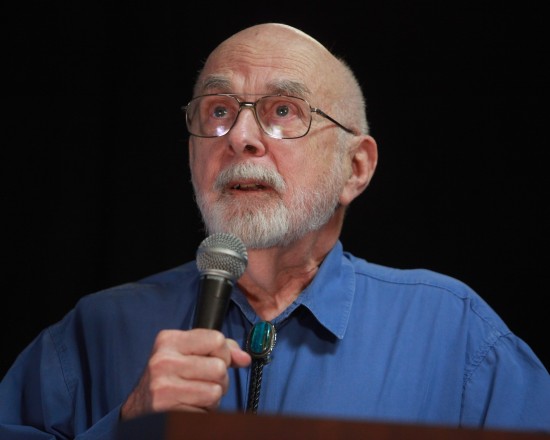
DR. DONALD SCOTT
by Dr. Hilton Ratcliffe
Electric Universe stalwart Donald Scott will be presenting his latest thoughts at EU2014. In his own words, “My talk is a presentation of the results I came up with after solving two coupled differential equations generated by asking what shape a stream of electrical charges will take on if it is left alone (free of external forces) in space. The results are consistent with observation and also with earlier descriptions of investigators such as Kristian Birkeland and Hannes Alfvén. But they also expand those earlier results to show that these flows (Birkeland currents) extend much farther out into space than previously thought. These currents are formed by concentric hollow cylindrical surfaces of charge. And they are wrapped by a (much more complicated than previously reported) magnetic-field structure.”
Clearly, Dr. Scott is a man for whom experiment and observation lead theory, and nothing could be more relevant for this year’s conference—All About Evidence. After a childhood spent alongside the Hudson River in New York state during which he had built his first telescope (a 6” Newtonian reflector), Don enrolled at the University of Connecticut at Storrs for a degree in electrical engineering.
After graduating with a BSEE, Don spent a year working for General Electric on large steam turbine generators and lightning arrestors. A hunger for further knowledge soon compelled him to leave GE and return to UConn to pursue his masters. It was during this stint at university that Don realised that he liked teaching more than industry, and the die was cast. Don and his wife Annis moved to the University of Massachusetts in Amherst so that he could take up a position as instructor in the electrical engineering department.
“As far as I know,” Don says, “I am the only faculty member to have been awarded tenure at UMass before attaining a PhD which I earned from Worcester Polytechnic Institute in 1968.” There he remained for 39 distinguished years. Professor Scott retired in 1998, and he and Annis moved to Arizona, ultimately finding their current home in the city of Scottsdale. It might well have been named after the Scotts, but of course it wasn’t. Scottsdale is famous for at least two things—those amazing Arizona night skies, and the most spectacular lightning storms imaginable. What better place for Don to retire? He had an observatory built onto their home, and there he could indulge his hobbies of observational astronomy and astrophotography.
When the night skies clouded over, Don was happier still, because then he could experience the energy of electrical discharge in the heavens, and feed his abiding avocation in the fields of plasma physics and Electric Universe theory. I first met Don and Annis Scott at a cosmology conference in Portugal in 2005. I was immediately struck as much by Don’s calm, measured style of presentation as by his subject matter: Electricity in the cosmos. Although I had gone out of my way to take post-graduate courses in both electricity and magnetism, I hadn’t until that time made the connection with astrophysical structures. Don’s paper was for me and most of the people in the auditorium a tantalisingly novel approach, and I resolved to discover more. Our pleasant informal group discussions at meal times led to a respectfully distant friendship and correspondence that has lasted to the present day.
One thing was clear to me when I heard that Don would be presenting again at EU2014: Whatever the topic, it would reflect Don’s awe at the world about us, and illustrate how well he grasped the logical simplicity of natural laws. I asked him to explain how his presentation would fit in with the EU mission. This is what he told me:
I have thought for many years that the detailed (and I think quite excellent) qualitative descriptions of what EU theorists believe is occurring in the cosmos needed more mathematical infrastructure than it had. Even good people like you, Hilton, challenged us to ‘show us the math’ to support our claims. So my present efforts are to supply some of that necessary mathematical formulation to provide strength to our ideas and make them more acceptable to the astronomical power-structure.
And his personal goals in life? “To live as long as I can in a healthy state of mind and body with my beloved Annis. If I can live long enough to see the ideas embodied in the EU theories gain a modicum of acceptance in the world of astronomy and astrophysics, that will be a rich bonus.” By his works shall you know him . . .





